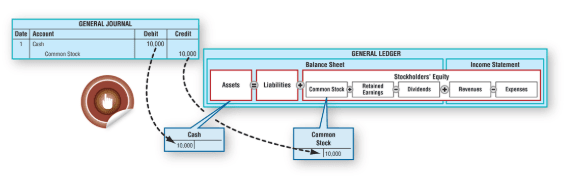It refers to the practice of tracking inventory flows and assigning costs on the assumption that the oldest goods in a company’s inventory are sold first. For instance, if 100 units were purchased at $10 each, the per-unit cost is $10. Businesses must also account for additional costs, such as shipping or handling fees, to reflect the total cost of inventory. The core principle of the FIFO method is the assumption that the first inventory items purchased or produced are the first ones sold.
- FIFO typically produces higher reported profits during inflation, strengthening your balance sheet for lenders and investors.
- If the dealer sold the desk and the vase, the COGS would be $1,175 ($375 + $800), and the ending inventory value would be $4,050 ($4,000 + $50).
- However, it is more difficult to calculate and may not be compliant under certain jurisdictions.
- This requires tracking which cost layer the item originally came from, which can be complex without specialized software.
- Under the moving average method, COGS and ending inventory value are calculated using the average inventory value per unit, taking all unit amounts and their prices into account.
The Standard FIFO Method Formula for Cost Flow & Ending Inventory
ShipBob finally gave us the visibility and analytics we were looking for. Through the software, we get real-time insight into how much inventory to allocate to a specific warehouse, our current on-hand inventory levels, and how long each SKU is going to last by location. ShipBob provides a lot of distribution metrics, and everything presented is useful. For example, say a rare antiques dealer purchases a mirror, a chair, a desk, and a vase for $50, $4,000, $375, and $800 respectively. If the dealer sold the desk and the vase, the COGS would be $1,175 ($375 + $800), and the ending inventory value would be $4,050 ($4,000 + $50).
- In accounting, First In, First Out (FIFO) is the assumption that a business issues its inventory to its customers in the order in which it has been acquired.
- The cost of goods sold for 40 of the items is $10 and the entire first order of 100 units has been fully sold.
- Learn the most important formulas, functions, and shortcuts to become confident in your financial analysis.
- What makes this file especially powerful is that it supports multiple products, so you don’t have to create separate tracking files for each SKU.
- The core difference between FIFO and LIFO lies in which goods they remove from inventory first.
- The FIFO inventory method assumes that the oldest products in inventory are recorded as sold first.
🔄 Physical Flow Alignment
The more recent $1.50 cost would show up on the balance sheet as ending inventory. FIFO — first-in, first-out method — fifo equation considers that the first product the company sells is the first inventory produced or bought. Then, the remaining inventory value will include only the products that the company produced later. On the third day, we assign the cost of the three units sold as $5 each. This is because even though we acquired 30 units at the cost of $4 each the same day, we have assumed that the sales have been made from the inventory units that were acquired earlier for $5 each. First-in, first-out (FIFO) is one of the methods we can use to place a value on the ending inventory and the cost of inventory sold.
How to Calculate Retained Earnings for a Balance Sheet
For industries dealing with non-perishable items (e.g., machinery or furniture), FIFO may not reflect the actual physical flow of inventory. In such cases, the recorded costs might not align with the true movement of goods. To calculate the average cost, take the total cost of all stock you’ve bought and divide it by the total units you have for sale. FIFO stands for first in, first out – it’s an inventory accounting method that accounts for selling the oldest inventory first. You don’t actually need to sell the oldest item first – but you report the inventory for accounting purposes as if you sold the oldest item first.
Products https://mesoestetic-th-shop.com/formula-and-examples-of-net-realizable-value/ should flow from your receiving dock to your shipping area without creating stagnant pools where inventory gets forgotten. Your oldest products need to be the easiest ones to reach, while newer inventory waits in less convenient spots. Let’s cut through the jargon and talk about what FIFO actually means for your business. FIFO stands for “First-In, First-Out,” and it’s exactly what it sounds like – you sell or use your oldest inventory before touching the newer stuff.
Keeping track of the number of units remaining will help to ensure that you take your units from the correct date and calculate ending inventory properly. Remember that under FIFO, periodic and perpetual inventory systems will always give you the same cost of goods sold and ending inventory. Therefore, you might rethink your inventory valuation strategies to mitigate increased tax liabilities with FIFO during inflation. However, FIFO can lead to increased tax liabilities due to higher reported profits during periods of inflation.
- Meanwhile, if you record a lower COGS, the company will report a higher profit margin and pay higher taxes.
- Yes, FIFO is still a common inventory accounting method for many businesses.
- The company’s accounts will better reflect the value of current inventory because the unsold products are also the newest ones.
- The cost of goods sold (COGS) is calculated as a sum of beginning inventory (opening inventory), purchases during the period, and closing (ending) inventory.
- For instance, consider a bakery that bakes fresh bread daily; the loaves baked first are typically sold first to ensure customers receive the freshest product.
- For example, FIFO can cause major accounting discrepancies when COGS increases significantly.
FIFO Inventory Method Vs LIFO Inventory Method
This is particularly important for seasonal or fast-moving industries like fashion and technology. The calculator’s output section provides clarity on your inventory flow and costs. The calculator automatically prioritizes the March 1 batch in cost calculations. You should consult your own professional advisors for advice directly Mental Health Billing relating to your business or before taking action in relation to any of the content provided. Sal’s Sunglasses is a sunglass retailer preparing to calculate the cost of goods sold for the previous year.






